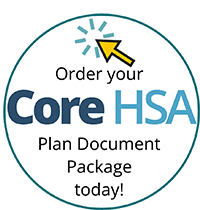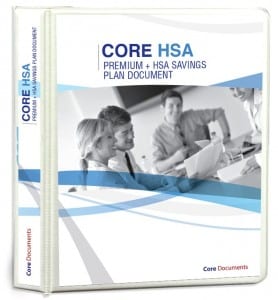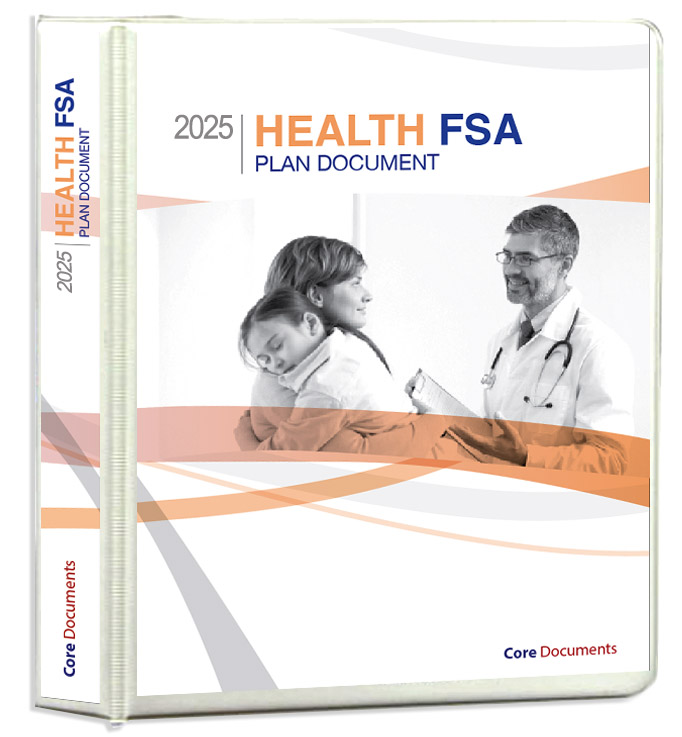Home / Blog / HSA or FSA for 2022 open enrollment: Pre-tax flex benefits rank with workers
HSA or FSA for 2022 open enrollment: Pre-tax flex benefits rank with workers
Employees have weighed in, and pre-tax flexible benefit plans are the way to go in a world navigating health care choices after COVID-19. Employers wanting to craft a benefits plan to attract and keep the best staff must seriously consider the Health FSA and Health Savings Account for the upcoming plan year. Learn more about adding an HSA or FSA for 2022 open enrollment

It’s time to review employee health benefit plan options, including HSA vs FSA, ahead of the annual open enrollment period.
The open enrollment period for 2022 health insurance begins November 1, 2021, and ends on December 15, 2022. If you are a small employer taking stock of your plan’s employee benefits package, this is the perfect time to think about adding an HSA, FSA, or both.
Why should a small employer do this now? Because it helps the company retain and attract the best employees to achieve its goals. And these accounts in particular make a company’s health benefits package more valuable to employees without requiring an employer to incur the higher costs of enhanced health coverage that not every employee wants or needs. The cost and coverage of health care are better managed by both parties when employees have more choices available.
MetLife’s recent survey on Open Enrollment showed that half of employees surveyed are more concerned with benefit options this year than last, with 67% of that increase being related to the COVID-19 pandemic. Employees cite specific benefits they’d like to see in their plans for 2022, too, with pre-tax flexible benefit plans like HSA vs FSA in the top three (behind life and dental insurance, respectively).
Health flexible spending arrangements (FSA) and Health Savings Accounts (HSA) are tax-advantaged health benefits in which employees may choose to participate, as needed. Employees make contributions to their accounts with non-taxed salary deductions and then use the funds to pay out-of-pocket medical expenses. Employers save, too, because the contributions are also free from payroll taxes, as part of a company’s Section 125 POP.
HSA or FSA benefits and features
The added buying power of a pre-tax HSA or FSA is especially attractive to employees in the aftermath of the COVID-19 health crisis. An employer-sponsored benefit plan can be designed so that employees pick up the additional protection that fits their family situation.
The main differences between the HSA or FSA comparison is the type of health insurance that works with each plan, how much can be contributed each year, surrender rules at the end of each plan year, and who owns the plan.
 Health Flexible Spending Arrangement
Health Flexible Spending Arrangement
Type of health insurance
Employees wanting to use an employer’s health FSA will select a traditional group health plan during open enrollment.
Contribution limits
The maximum contribution an employee can make to a health FSA in the current plan year is $2,850. This amount may increase for 2023 to around $2,950.
Employers may also contribute an amount up to the annual limit and it is tax-free to the employee. For more on the rules for employer health FSA contributions, read Can employers add to employee Health FSA contribution?
Uniform Coverage rule
Health FSAs are subject to the uniform coverage rule. This means that the full amount of the employee’s annual election must be made available to cover eligible expenses on the first day of the plan year.
For example, an employee is contributing $100 per month to a health FSA, for a total of $1,200 in the plan year. In April, the employee submits a claim for $1,100 in eligible medical expenses. The employer must pay that expense even though the employee has contributed only $400 by then. If the employee leaves the company in June, the employer has no recourse to recover the $500 yet unpaid by the employee.
To lessen the risk inherent in pre-funding, some employers limit the amount an employee may contribute to less than the annual maximum set by the IRS.
Surrender rules
The health FSA comes with a default use-it-or-lose-it rule. Basically, if an employee has an unused balance at the end of the plan year, it is surrendered to the employer (to use for administrative costs related to the plan).
However, the IRS provides two ways an employer can mitigate employee losses with:
- A 2.5-month grace period to use the funds, or
- A $550 carryover of funds into the new plan year.
Ownership
When an employee separates from the company, their health FSA stays with the employer. Eligible medical expenses incurred through the last day of employment may be submitted for payment using the balance remaining in the FSA on the last day.
 Health Savings Account
Health Savings Account
Type of health insurance
To qualify to make contributions to an HSA during any calendar year, an individual must be covered by a high-deductible health plan (HDHP). These plans come with lower premiums, saving money for both the employee and the employer when offered through the company’s Section 125 POP.
However, lower premiums mean higher deductibles and out-of-pocket limits for the insured. In 2021, an HSA-compatible HDHP must have an annual deductible of at least $2,800 for family coverage ($1,400 for individuals) and an out-of-pocket maximum of $14,000 for family coverage ($7,000 for individuals).
Contribution rules
The annual contribution limit set by the IRS for HSAs is $7,200 for those with family coverage ($3,600 for individuals). Individuals age 55 and older are allowed an additional $1,000 annually.
HSA contributions can be made by the employee, employer, and other sources. The contribution limit applies to the combined annual amount given by all sources and is always entirely tax-free to the employee.
Uniform Coverage rule
An HSA is not subject to uniform coverage rules. This means that money is only available for eligible expenses after it has been received in the account.
Surrender rules
There is no surrender of unused funds in an HSA. Any balance in an employee’s HSA at the end of a plan year remains in the account, earning interest, through retirement. In retirement, an employee may use HSA funds for any medical expense tax-free. Retirees may also use HSA funds for non-medical purposes with those amounts taxed at their then-current rate.
Ownership
The HSA is an employee-owned account, so it stays with the employee when there is a separation from an employer.
Tax Advantage
Since HSAs are employee-owned, an individual may one up through a bank or other broker and make deposits on their own, and see the same income tax savings.
However, the employee will not realize the immediate Social Security and FICA savings that come in pre-tax salary reductions through an employer’s Section 125 plan. That’s a 7.65% tax or about $550 per year.
When an employer provides an HSA option, employees can then make contributions to their account entirely tax-free, and the employer also sees payroll tax savings on those pre-tax salary deductions.
The big picture
This table gives the big picture of features in a Health Savings Account and a health Flexible Spending Arrangement.
Feature
|
Health Savings Account
|
Health FSA
|
| Health insurance type |
High-Deductible
Health Plan |
Traditional Group
Health Plan |
| Annual contribution limit |
Yes |
Yes |
| Higher contribution limit for family coverage |
Yes |
No |
| $1,000 annual catch-up allowance for ages 55+ |
Yes |
No |
| Employer may contribute |
Yes |
Yes |
| Others may contribute |
Yes |
No |
| All contributions tax-free to employee |
Yes |
Yes |
| Fully funded on first day of plan year |
No |
Yes |
| Unused funds surrendered |
No |
Yes |
| Balance rolls over through retirement |
Yes |
No |
| Account is owned by employee |
Yes |
No |
| Account remains with employer |
No |
Yes |
Can employees have both an HSA and FSA?
Yes! There’s no need to make employees choose either an HSA or FSA when both will do. Just add the HSA-compatible health FSA option for those wanting the maximum in pre-tax health benefits flexibility. The limited-purpose FSA will pay benefits for dental and vision expenses only and is subject to the contribution limit and surrender rules of a regular health FSA.

Deluxe binder version
Save an extra 8% with tax-free insurance premium & more HSA tax savings at work
$129 one-time fee in PDF via email*
$179 one-time fee in PDF email* + Deluxe Binder via USPS
The $99 Section 125 Plan plus the $30 HSA Module from Core Documents allows both an employer and employee to realize more HSA tax savings — an additional 8% — by using pre-tax employee dollars to fund a Health Savings Account (HSA).

Deluxe binder version
Employees Save up to 40% with Tax-Free Medical, Dental, Vision Expenses at Work
$129 one-time fee in PDF via email
$179 one-time fee in PDF email + Deluxe Binder via USPS
A Section 125 plan Health Flexible Spending Account (FSA) allows employees to set aside pre-tax dollars to pay for eligible out-of-pocket medical, dental, and vision care expenses not covered by other insurance.
The Health FSA reduces payroll taxes for both the employer and the employee, making it a popular benefit option. For the employee, it’s like getting a 30% to 40% discount on eligible medical, dental, and vision expenses. The employer realizes up to 8 to 10% in matching FICA and other payroll tax savings.
Employers recoup the small $129 one-time setup fee quickly and then continue to realize tax savings year after year.